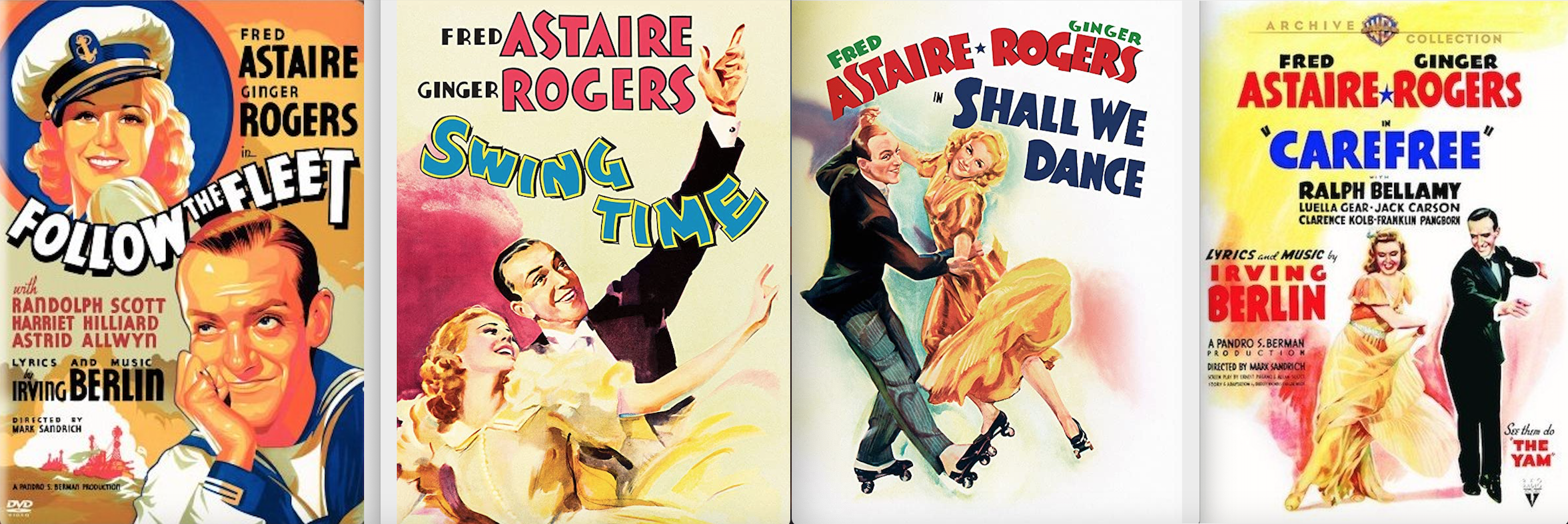
The Gay Divorcee (1934), features the second time Fred Astaire and Ginger Rogers appeared in a film together, and the first time as its stars. Co-stars are Alice Brady (1892-1939) and Edward Everett Horton (1886-1970), according to a title card at the beginning.
Then, this screen appears:
THIS PICTURE APPROVED BY THE PRODUCTION CODE ADMINISTRATION OF THE MOTION PICTURE PRODUCERS & DISTRIBUTORS OF AMERICA.
CERTIFICATE NO. 282
Whew! I feel better about this film already. I’d hate to think it wasn’t approved.
By the way, if you’d like to read up on the history of the Motion Picture Code, here it is. You’re welcome.
The plot of The Gay Divorcee is as follows:
Mimi Glossop (Ginger Rogers) seeks a divorce from her geologist husband Cyril Glossop (William Austin), whom she has not seen for some time. Under the guidance of her domineering and much-married Aunt Hortense (Alice Brady), she consults incompetent and bumbling lawyer Egbert Fitzgerald (Edward Everett Horton), once a fiancé of her aunt. He arranges for her to spend a night at a seaside hotel and to be caught in an adulterous relationship, for which purpose he hires a professional co-respondent, Rodolfo Tonetti (Erik Rhodes). But Egbert forgets to arrange for private detectives to “catch” the couple.
By coincidence, Guy Holden (Fred Astaire) an American dancer and friend of Egbert’s, who briefly met Mimi on his arrival in England, and who is now besotted with her, also arrives at the hotel, only to be mistaken by Mimi for the co-respondent she has been waiting for. While they are in Mimi’s bedroom, Tonetti arrives, revealing the truth, and holds them “prisoner” to suit the plan. They contrive to escape and dance the night away…
Even though this movie and its predecessor Flying Down to Rio are separated only by one year, these films are night and day from one another.
For example, this movie is much more fun from the get-go, probably because it’s obvious who its stars are: Astaire and Rogers. They’re in almost every scene from the start of the film onward. That, plus, Astaire starts dancing almost immediately. He’s already the hoofer he would later become famous for being. And the songs are more fun. And then there’s Betty Grable performing “Let’s K-nock K-nees.”
The movie opens on a bunch of women singers/dancers, all of whom are most likely dead by now. (That’s one of my foibles. I watch old movies and think, “They’re probably all dead.” And then I get depressed.) The singers/dancers are playing with hand puppets with their fingers the “legs” of the dancers.
The camera pans left to a table at which Fred Astaire and Edward Everett Horton sit, also playing with hand puppets. Horton says he doesn’t have his wallet, they can’t pay their tab, and Astaire has to prove he’s a famous dancer by – what else? – dancing. After his exhibition of fleet-footedness, Horton suddenly finds his wallet. The dance was in vain. But it was fun to watch.
Ginger Rogers appears when her dress gets caught in one of her trunks. She calls for a porter. Astaire arrives instead. Comedy ensues.
“It’s just like looking for a needle in a haystack,” Astaire sings, wondering how he can find Rogers again. The singing quickly becomes another dance number, this time in his spacious hotel room with a butler tossing him his hat and umbrella. Dapper.
I’ve always wondered how tall Astaire was. He seemed to be all leg. According to his listing on IMDB, he was only 5′ 9-1/2″. Given how he looks when he dances, I’d say he was about five feet of leg, and nine inches of torso.
Of course, he finds Rogers by – literally – hitting the back of her car with his car. An implausible car chase occurs and the two would-be lovebirds become actual lovebirds.
Another thing I like to do when I watch movies is to assign and age to the actors. In this movie, for instance, Fred Astaire (born in 1899) is 35. Ginger Rogers (born in 1911) is 23.
As I wrote at the beginning of this entry, The Gay Divorcee is night and day from Flying Down to Rio. (Which makes sense since one of the famous songs in the movie is “Night and Day,” right?)
I’m not sure I’d ever like to see Edward Everett Horton dance in shorts again (as he did during “Let’s K-nock K-nees”). But that’s only a minor quibble. He was dancing with Betty Grable. So my eyes were elsewhere, anyway. Incidentally, Betty Grable was 18 in this movie.
I liked The Gay Divorcee. It was a fun movie with catchy song/dance numbers and a decent number of memorable characters, including the very British Eric Blore as a flustered waiter. Blore (born in 1887) was 47 in this picture.
Speaking of “Night and Day,” that’s the scene in which Fred more or less woos Ginger and they dance together for the first time in this movie. It’s a great scene, even though Ginger is less than wowed by Astaire’s advances.
But she’s fully on the Astaire train by the last song and very big dance number of the movie, a song titled “The Continental.”
According to the entry for “The Continental” on Wikipedia,
Arthur Fiedler and the Boston Pops Orchestra recorded the music in their very first RCA Victor recording session, in Boston’s Symphony Hall, on July 1, 1935.
Frankly, “The Continental” number goes on about twice as long as it should, overstaying its welcome a bit. But I’m always keen to see a spectacle, especially one so energetically performed.
